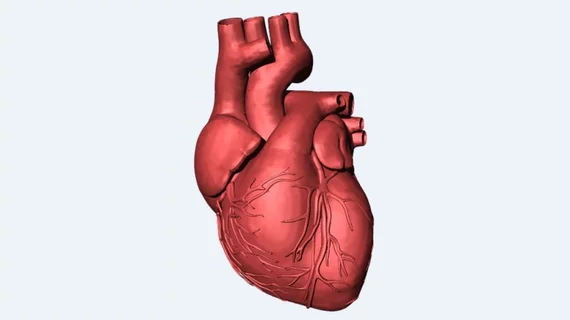Automated analysis of 3D echocardiography shows potential in clinical practice
Automated 3D echocardiography (3DE) analysis using a new, commercially available algorithm has allowed University of Chicago researchers to accurately quantify left-heart size and function in two-thirds of 300 consecutive patients. They conclude the technology can be useful in clinical practice despite its known workflow-interruptive drawbacks—especially when the echocardiographer has the know-how to correct for its shortcomings.
The Journal of the American Society of Echocardiography published the team’s findings online July 6.
In introducing their work, Diego Medvedofsky, MD, and colleagues note that 3DE typically relies on manual input, which creates a drag on workflow. Their study sought to prospectively test a recently developed automated, adaptive analytics algorithm for simultaneous quantification of left ventricular (LV) and left atrial (LA) volumes.
The researchers had images from 300 consecutive patients rated as poor, adequate or good as analyzed by an expert echocardiographer.
LV volumes and ejection fraction (EF) and LA volumes were obtained using the automated analysis (Philips’s HeartModel) with and without editing the endocardial boundaries and using conventional manual tracing (QLAB, also Philips) blinded to the automated measurements as a reference.
Automated analysis was repeated by two readers without 3DE experience in a subgroup of 100 patients.
The automated analysis failed in 10 percent of patients (31 of 300), while patients with poor image quality (n = 72, 24 percent) showed suboptimal agreement with the reference technique, especially for left ventricular ejection fraction, the authors report.
However, patients with adequate (n = 89, 30 percent) and good (n = 108, 36 percent) images “showed small biases and excellent correlations without border corrections, which were further improved with editing,” Medvedofsky et al. write.
Border corrections by inexperienced readers did not improve the agreement with reference values.
The authors conclude that the new, automated 3DE analysis allows accurate measurements of LV and LA volumes in two of three nonselected patients with adequate or better image quality.
“While 3DE experience is needed to maximize the accuracy of this approach by endocardial border corrections, its fully automated default version is reasonably accurate and can be performed by less experienced readers in this patient population,” they write. “This automated approach has the potential to overcome the workflow limitations of 3DE and may thus facilitate further integration of 3DE quantification in routine clinical practice.”

